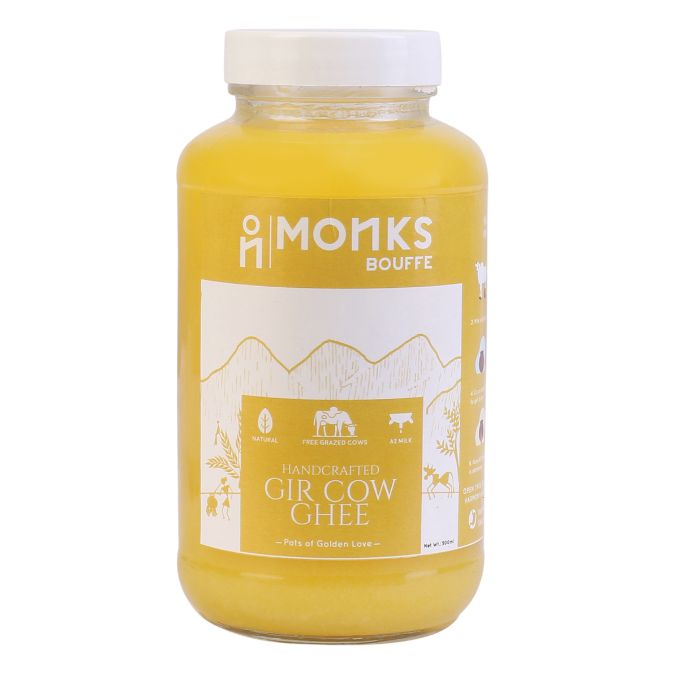Additional 5% OFF on First Order
Use Code: FIRSTORDER5
15% OFF on Nut Butters
Use Code: NUTBUTTER15
₹150/- OFF on order above ₹2999.
Use Code: 150OFF
₹350/- OFF on order above ₹4999.
Use Code: 350OFF

Monks Bouffe
MRP
Select Option
Product of Regenerative Farming
Traditionally Processed
Freshly Packed on order
Premium Quality
Ships in 1-2 business days pan India
For those dollops of extra love with your rotis and tadkas, we bring you ghee in the purest form.
How the cow is treated and what it consumes affects directly the ghee we get. Our free-grazed cows are always made to feel comfortable, consuming only chemical-free grass and staying on open farms. Healthy, well-treated cows give ghee that's the best immunity booster needed.
Bilona method of making Ghee:
OPEN THIS BOTTLE TO OPEN YOURSELF TO HARMONY AND NEWER WAYS OF HEALING!